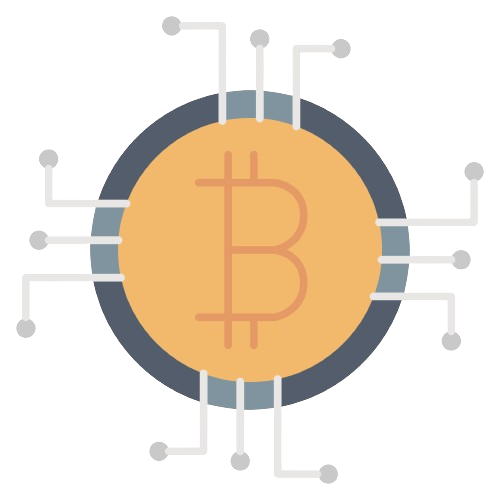
In the annals of technological breakthroughs, few events have captured the imagination and sparked a seismic shift quite like the creation of the Bitcoin Genesis Block. This seminal event, which occurred on January 3rd, 2009, marked the birth of a revolutionary decentralized digital currency that would challenge the very foundations of traditional finance. As we delve into the intricacies of the Bitcoin Genesis Block, we unravel the profound implications it has had on our understanding of money, trust, and the power of decentralization.
The Vision of a Decentralized and Trustless System
The Bitcoin Genesis Block represents the culmination of a visionary idea conceived by the enigmatic Satoshi Nakamoto. In a world where centralized financial institutions wield immense power and control, Nakamoto envisioned a decentralized and trustless system that would empower individuals and circumvent the need for intermediaries. The Genesis Block laid the foundation for this ambitious endeavor, ushering in a new era of peer-to-peer electronic cash transactions.
The Immutable Ledger and the Concept of Proof-of-Work
At the heart of the Bitcoin Genesis Block lies the revolutionary concept of an immutable and decentralized ledger, known as the blockchain. This ingenious innovation introduced the Proof-of-Work (PoW) consensus mechanism, which ensures the integrity and security of the Bitcoin network by requiring computational resources to validate transactions and create new blocks.
The Birth of a Digital Scarcity

One of the most profound implications of the Bitcoin Genesis Block is the creation of a digital scarcity. Unlike traditional fiat currencies, which can be inflated or manipulated by central authorities, Bitcoin’s supply is finite and predetermined. This scarcity, coupled with the decentralized nature of the network, has positioned Bitcoin as a potential store of value, immune to the whims of centralized institutions.
The Embedded Message and Its Prophetic Significance
Buried within the Genesis Block’s data lies a cryptic message that has become a potent symbol of Bitcoin’s purpose and ideology. The message, taken from a headline in the British newspaper The Times, reads: “The Times 03/Jan/2009 Chancellor on brink of second bailout for banks.” This poignant reference to the global financial crisis of 2008 underscores the motivation behind Bitcoin’s creation – to provide an alternative to a flawed and centralized financial system.
The Emergence of a Global Network and the Bitcoin Wallet
The Genesis Block not only laid the foundation for the Bitcoin network but also paved the way for the development of essential tools and infrastructure. One such tool is the Bitcoin Wallet, a secure digital wallet that allows users to store, send, and receive Bitcoin transactions. As the network grew, Bitcoin Wallets evolved, offering enhanced security features and seamless integration with the ever-expanding Bitcoin ecosystem.
The Ongoing Battle for Decentralization and Censorship Resistance
While the Bitcoin Genesis Block marked the beginning of a decentralized revolution, the battle for maintaining true decentralization and censorship resistance is an ongoing one. As the cryptocurrency ecosystem evolves, various challenges have arisen, including centralization tendencies, regulatory pressures, and the influence of powerful entities. However, the principles enshrined in the Genesis Block serve as a guiding light, reminding the community of the importance of preserving the decentralized and trustless nature of Bitcoin.
The Ripple Effect on Emerging Technologies and Societal Change

The impact of the Bitcoin Genesis Block extends far beyond the realm of finance. Its creation has sparked a broader conversation about the potential of decentralized technologies to disrupt various industries and catalyze societal change.
From decentralized applications (dApps) to decentralized autonomous organizations (DAOs), the principles of decentralization and trustlessness have inspired a wave of innovation and challenged traditional power structures.
Conclusion
As we reflect on the significance of the Bitcoin Genesis Block, it becomes evident that this singular event has fundamentally altered our perception of money, trust, and the role of centralized institutions. The Genesis Block’s creation marked the beginning of a revolution that has ushered in a new era of decentralized finance and challenged the status quo.
The immutable ledger, the concept of digital scarcity, and the embedded message within the Genesis Block have become enduring symbols of Bitcoin’s ethos and the pursuit of a trustless and decentralized system. While the journey has been fraught with challenges and obstacles, the principles enshrined in the Genesis Block continue to inspire and guide the global community of developers, entrepreneurs, and visionaries.
As the world grapples with the implications of this revolutionary technology, the Bitcoin Genesis Block stands as a testament to the power of innovation and the relentless pursuit of freedom and autonomy. It serves as a reminder that even the most ambitious dreams can be realized through perseverance, ingenuity, and a steadfast commitment to challenging the status quo.
In the ever-evolving landscape of finance and technology, the Genesis Block’s legacy will endure, inspiring generations to come and paving the way for a future where decentralization, transparency, and individual empowerment are the cornerstones of a more equitable and trustless global economy.